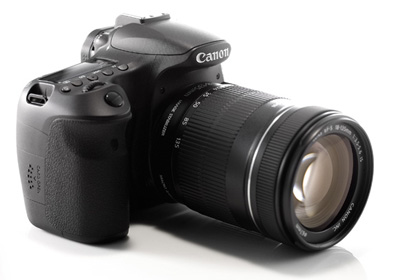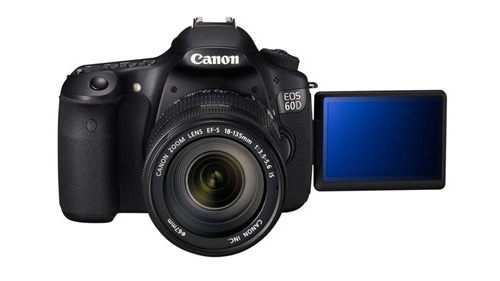Why you can trust TechRadar
Around the back, the control panel has been greatly simplified compared with the 50D, maybe because of the extra space required by the pivoting LCD. The upshot is that you lose the row of buttons along the bottom of the back plate, although a couple of them have been repositioned.
It's not too big a deal because the Canon 60D makes the most of Canon's excellent Quick Control menu, displayed on the main LCD. Press the 'Q' button and you get quick access to ISO, exposure compensation, drive mode, picture style, white balance, auto lighting optimization levels, image quality settings, custom functions and a neat virtual horizon display. Even so, one-touch access to white balance settings would have been nice.
Another bit of redesign is that the separate multi-controller and quick control dial used on most up-market Canon DSLRs have been combined into a single concentric configuration. This includes the Set button at its centre, with an 8-way thumb pad surrounding it, and the quick control ring around the outer circumference. It saves space but can be a bit fiddly in operation.

The pivoting LCD might seem a little gimmicky but actually works really well in Live View mode as well as when shooting movie clips. It's especially useful when shooting from very high or low positions, and makes taking self-portraits a breeze. Another bonus is that you can flip the LCD over and fold it in to protect its surface from getting scratched in transit.
A first for Canon DSLRs, the Canon 60D enables you to edit photos in-camera, as well as adding a few creative effects and, better still, you can process RAW images and convert them to JPEGs. There's also an in-camera rating system, so you can score your shots with marks out of five.
One particularly useful feature inherited from the 7D is a built-in wireless flash controller. This enables you to use off-camera flash without having to use a connection cable, or having to buy a separate wireless flash controller or resorting to setting up multiple flashguns in master and slave modes.

However, the Canon 60D isn't so clever when it comes to studio flash, as the PC socket normally fitted to this class of camera (including the 50D) is strangely lacking, so you'd need to buy a wireless studio flash trigger set or a hotshoe adaptor.
The last feature (or rather lack of it) that's sure to be a talking point is that most cameras at this price point have a facility for fine-tuning autofocus for individual lenses. Again, this feature was present and correct on the 50D but has been dropped on the 60D.
